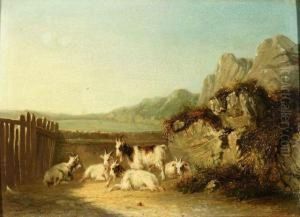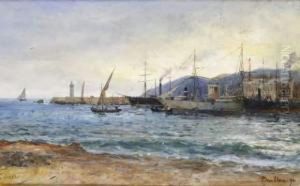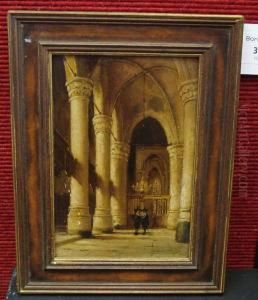Josef Eduard Tetar Van Elven Paintings
Josef Eduard Tetar van Elven was a Dutch-Belgian painter and draftsman born on May 9, 1820, in The Hague, Netherlands. He was active during the 19th century, a period that witnessed significant transformations in the European art world with the advent of movements such as Romanticism, Realism, and Impressionism. Despite these evolving artistic contexts, van Elven is often associated with the academic and traditional styles of painting that hearkened back to classical and historical themes.
Educated in the fine arts from a young age, Tetar van Elven demonstrated a strong proficiency in drawing and painting, which led to his enrollment at the Royal Academy of Art in The Hague. His studies there allowed him to hone his skills in the classical style, mastering the depiction of historical and mythological subjects which were popular during his time. His proficiency and adherence to academic standards earned him recognition, and he began to exhibit his works at various salons and exhibitions.
In the mid-19th century, van Elven moved to Belgium, where he continued to develop his career. He became a respected figure within the Belgian art community, engaging with other artists and contributing to the cultural scene. His works were characterized by their attention to detail, use of rich color palettes, and often included allegorical and historical references.
Though not as widely known today as some of his contemporaries, Tetar van Elven's contributions to the arts during his lifetime were significant. He was not only a painter but also a teacher, passing on his knowledge and skills to a new generation of artists. His commitment to the academic style provided a counterpoint to the burgeoning avant-garde movements that were beginning to take hold in the art world of the late 19th century.
Josef Eduard Tetar van Elven died in 1888, leaving behind a legacy of classical artistry at a time when the very foundations of art were being questioned and reformulated. His works remain a testament to the skills and traditions of 19th-century academic art, offering insights into the period's aesthetic values and cultural history.


